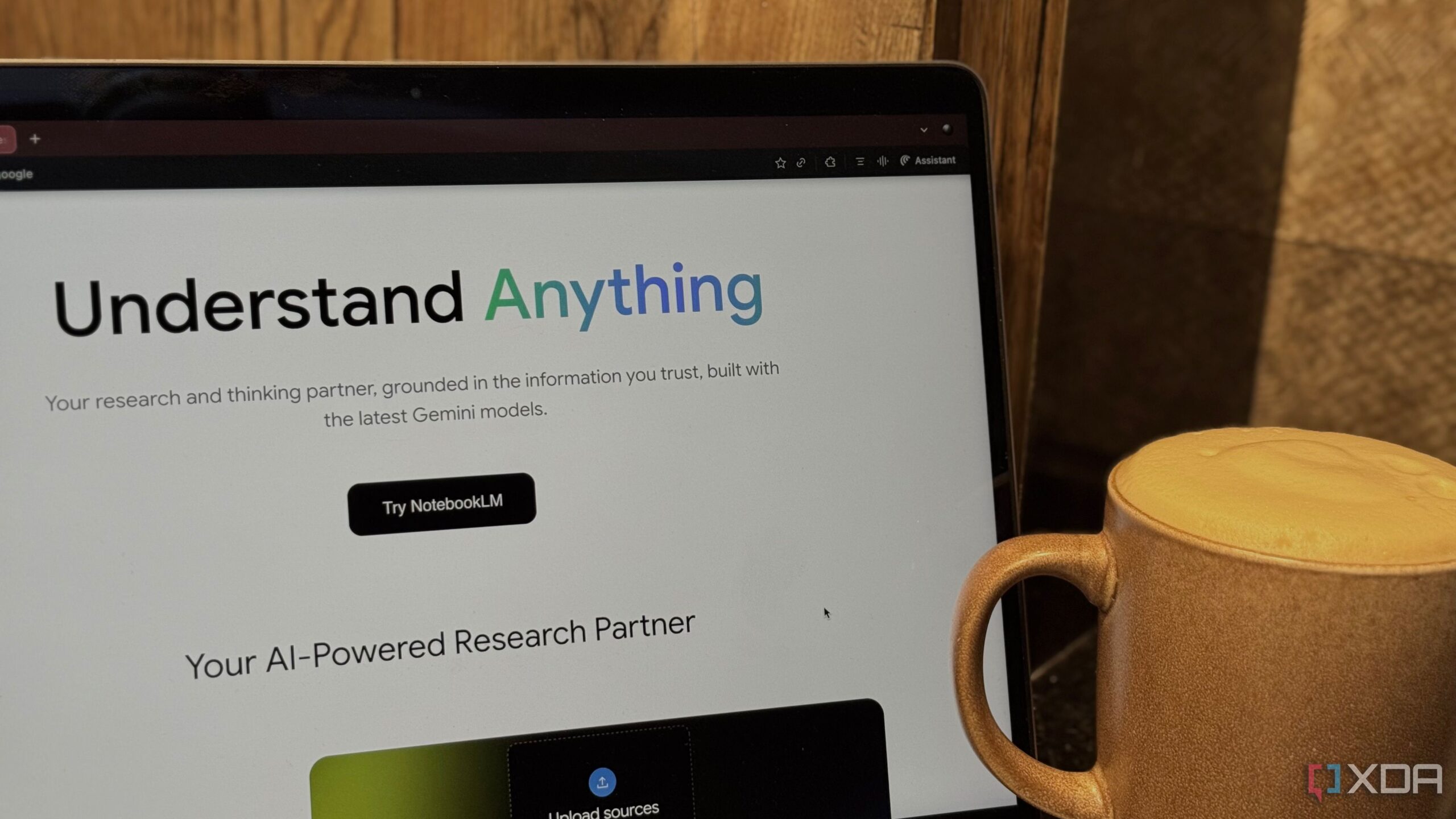Google’s NotebookLM, often mistaken for a traditional note-taking application, is designed primarily as a research assistant. Users have been exploring its versatile capabilities, using it for various tasks, but it is essential to understand its intended function. While the app’s name suggests a focus on note-taking, it is fundamentally not built for that purpose.
Understanding NotebookLM’s Core Functionality
NotebookLM serves as an AI research tool that aids users in processing and interacting with information they already have. According to Google, it is described as an “AI Research Tool and Thinking Partner.” Unlike conventional note-taking apps, which offer dedicated spaces for jotting down ideas, NotebookLM requires users to upload sources to gain meaningful insights. It does not present a blank page for spontaneous thoughts or brainstorming sessions. Instead, users must first gather information from other sources before utilizing NotebookLM’s features.
For instance, once users upload research materials, they can convert these into various formats such as podcasts, videos, or organized reports. This process emphasizes that NotebookLM is not a starting point for note-taking but a tool for enhancing understanding of pre-existing information.
The Limitations of NotebookLM as a Note-Taking Solution
One of the most significant drawbacks of NotebookLM is its lack of an effective organizational system. Traditional note-taking applications excel in providing structures such as folders, tags, and notebooks, enabling users to categorize and retrieve their ideas over time. NotebookLM, however, offers minimal organization. Users can create notebooks for their sources, but the functionality does not extend to tagging or sorting content across these notebooks.
As noted in a review published in April 2023 on XDA, the requirement to create a new notebook for every project can quickly become cumbersome. Users often find themselves manually tracking which sources belong to which notebooks, leading to potential disarray. For example, a student managing multiple courses may need to create separate notebooks for each subject, complicating their ability to connect related ideas.
While it is possible to use NotebookLM for note-taking, the experience is not as seamless as with dedicated note-taking tools. Users might find themselves using NotebookLM in conjunction with applications like Notion or Evernote to create a more efficient workflow. This hybrid approach allows users to enjoy the benefits of both platforms while maintaining the organizational capabilities they expect from a traditional note-taking app.
Ultimately, while NotebookLM offers innovative features that can assist in research and idea processing, it is crucial to recognize its limitations. Users seeking a straightforward note-taking solution may be better served by exploring applications specifically designed for that purpose.







